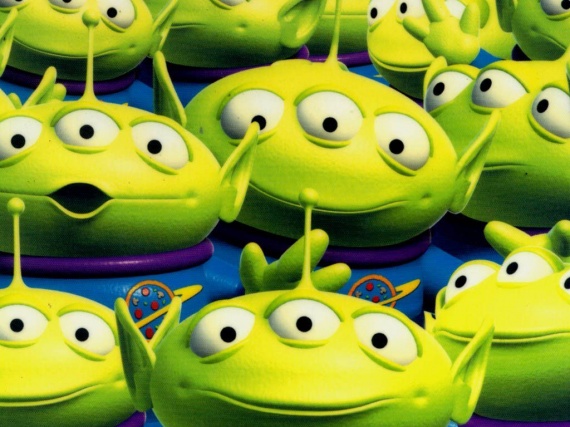Can Walt Disney Animation and Pixar Coexist?

In 1995 John Lasseter and his company, Pixar, introduced "Toy Story", and with it, a completely different style of animation. Slowly, this 3D anomaly became the standard.
Over the next decade, Lasseter, with his Hawiian print shirts and easy-going demeanor, brought a fun familiarity to animation, all the while Pixar's original stories had a nuance and maturity to them that was never felt fully present in Disney animation.
READ MORE: 'Remember the Scene?: Ratatouille'
In one of the more brilliant media acquisitions of this century, Disney acquired Pixar- characters, animators, Lasseter and all in 2006. Disney began to transition away from its technical pencil-and-paper routes, but not before the company gave it one last 'ol college try.
"Princess and the Frog" was a commercial and critical disappointment. The movie shared all of the same superficial tenants of classic Disney Golden Age cinema. There was a princess (or princess figure), there was a love story, and there was original music. The difference? The audience.
"Princess and the Frog" felt like a canary in a coal mine, a sort of test to see if modern audiences still had a desire, a want for the classic 2D style.
As if anticipating the failure, the following year Disney Animation rose from the hand drawn ashes like a computer animated phoenix with 2010's "Tangled." It had the look, as well as the verbal and physical humor, of a Pixar film, but still maintained Disney animation's narrative routes in the musical fairytale.
Looking to the future, with an increasing staying power as evidenced by last year's ultra popular "Frozen", Walt Disney Animation has proven itself an up-and-coming equal to the once superior Pixar, whose once unquestionable gift for storytelling has been in question as of late.
.jpg)
Pixar has announced their upcoming slate out to 2017. The next Pixar feature will be an original concept released this summer entitled "Inside Out", and will follow a young girl and the personified emotions that live inside the Headquarters of her mind. As she does in her everyday life, Amy Poehler will be playing the personification of Joy.
November 2015 we will have another original feature called The Good Dinosaur that answers the question: What would the world be like is dinosaurs did not go extinct? (I am pretty sure Steven Spielberg already asked this question and the answer was a resounding "not good.") After this Pixar will release a sequel to "Finding Nemo", entitled "Finding Dory", set to be out in the June of 2016, followed by "Toy Story 4" in 2017.
After this weekend's "Big Hero 6", we will have to wait until March of 2016 for a new Walt Disney animated feature "Zootopia." Then that same year, with a November release date, there will be the arrival of another Disney Princess to add to the evermore lucrative collection.
READ MORE: Diversity Has Increased In Comics
So as not to come into direct commercial competition with one another, the current release pattern that Pixar and Disney Animation seem to be working off of is that every other November and March Disney Animation will release a feature, while Pixar will fill in the other November release dates and will also put out a film every June. While this allows for maximum profitability, this schedule means that every other year the movies will be pitted against one other for awards season.
So, the question that remains is can these two coexist?
It doesn't really matter.
Walt Disney Animation, which has been under Lasseter's creative control since 2007, finds itself in the middle on yet another reincarnation. Walt Disney and Pixar's jam-packed animation calendar, with 10 titled and untitled films, is indicative that Disney know that this neo-renisance or third Golden Age of animation is going to come to an end, like the ones before it.
So in the meantime, they are going to cash-in on the current public interest, because Disney, more aware than anyone else, knows that nothing gold can stay.
Reach Staff Reporter Mia Galuppo here. Follow her on Twitter here.



